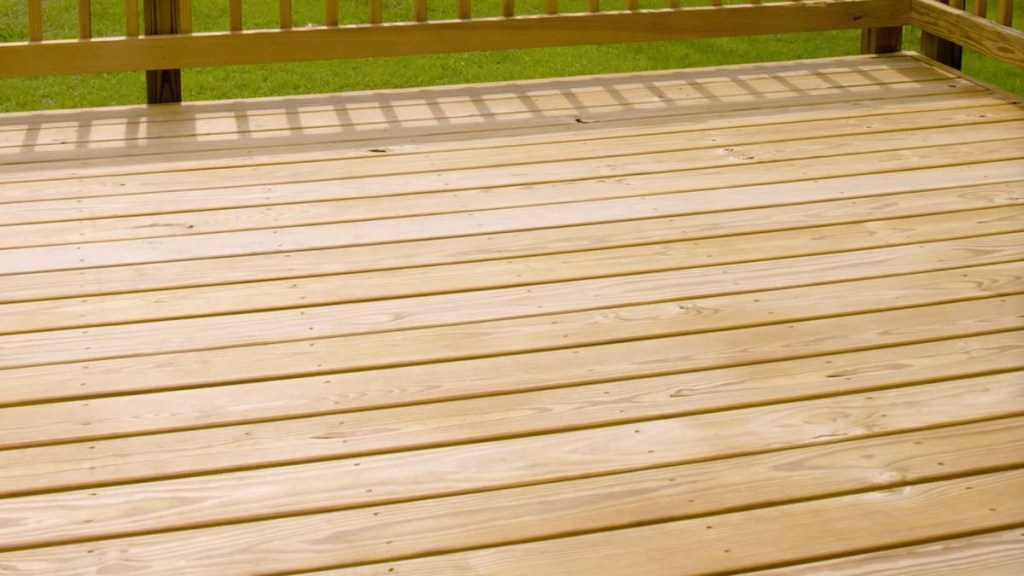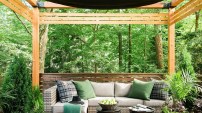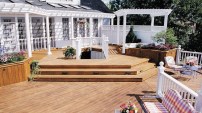Lumber’s natural beauty makes it an ideal choice for your next deck or outdoor project. However, it’s important to understand the treated lumber you’re working with to ensure your project looks just as good next year as it did the day you built it.
Watch the video below for helpful building tips.
Why should you pay attention to your environment?
The environment impacts the lumber used for outdoor projects. For instance, in colder environments lumber may stay moist for longer, causing it to remain in an expanded state, whereas dryer environments will cause lumber to shrink. Whatever the weather is like where you’re building, considering its impact will help you find the right lumber for your project.
What type of lumber should you buy?
When building an outdoor structure, and particularly when considering board spacing, make sure to find out how your lumber was treated in order to gauge how it will change over time. If you’re buying pressure-treated lumber at the lumberyard, ask if it has been kiln dried after treatment.
Kiln-dried lumber retains less moisture than lumber that has been partially air-dried, or dried over time. Sometimes called ‘wet lumber’, these boards will retain more moisture and be heavier that kiln-dried lumber, so they require more time to dry before finishing. They are more likely to shrink more over time, especially if you’re using it in a drier environment. Knowing which kind of lumber you’re working with will help you make decisions about how much space you need between boards, but remember, overall drying time will depend upon the product and local climate conditions.
How much room should you leave between treated lumber boards?
If you’re building with kiln-dried lumber, make sure to leave boards ⅛’’ apart for the best results. You can use a framing nail or a 16D nail to make sure that each board is a uniform distance from each other. However, if you’re building with wet lumber, you should leave boards 1/16’’ apart, as this lumber will shrink more over time. Finally, if you’re using boards that are damp and heavy, butt them together in order to allow room to shrink even more.
Should you seal cut boards?
It’s good practice to seal the ends with 2% Copper Naphthenate or another preservative. Simply apply the preservative to the end cuts with a sponge or painters brush according to the manufacturer’s instructions.
Looking for more information and ideas? Visit www.WoodNaturally.com to learn about pressure-treated lumber, and find the right option for your project.



